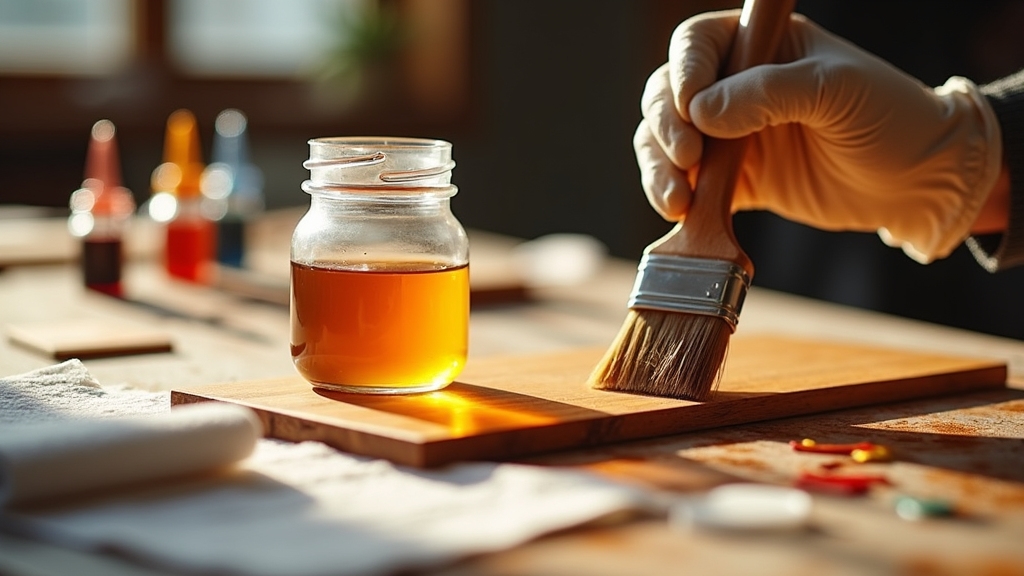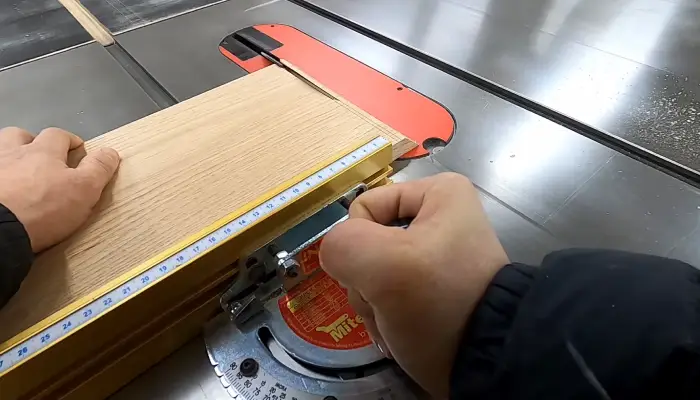Can You Tint Polyurethane? Everything You Should Know
You can tint polyurethane by carefully adding compatible pigments, like oil-based or universal colorants, to its base for custom hues without affecting its protective properties. Stir the resin thoroughly, add pigments drop-by-drop, and test on scrap material to match desired tones accurately.
Use appropriate application methods, such as brushing or spraying, for even coverage. Proper drying and curing guarantee ideal finish quality. Explore these precise steps and tips to achieve the perfect tinted polyurethane finish.
Key Takeaways
- Yes, you can tint polyurethane by adding compatible oil-based or universal pigments carefully to achieve custom colors.
- Use solid pigment pastes or concentrated liquid colorants at low concentrations to avoid curing issues.
- Stir polyurethane uniformly and add pigment drop-by-drop for consistent color distribution.
- Test tinted mixtures on scrap material before full application to ensure desired color accuracy.
- Choose application methods like brushing, wiping, or spraying based on project needs and finish uniformity.
Understanding the Basics of Tinting Polyurethane
Although tinting polyurethane requires careful control, you can achieve precise color customization by adding pigments incrementally and testing thoroughly.
Start by stirring the polyurethane uniformly to guarantee consistent pigment distribution. Add oil-based or universal pigments drop by drop, especially for oil-based polyurethane, to prevent overly dark mixtures. It is advisable to prepare a small test batch in a separate container to experiment with the color before mixing the entire quantity.
Keep precise records of pigment quantities to replicate colors accurately. Always prepare small test batches and apply them on scrap wood, as drying alters color perception.
After mixing, let the tinted polyurethane settle for bubbles to dissipate. Avoid latex paints; instead, consider oil-based paints if you choose alternative tinting methods.
Applying thin, even coats with proper tools enhances uniformity. These foundational steps establish control over color intensity, assuring predictable, replicable results in your tinting process.
Choosing the Right Pigments and Paints for Tinting
Where do you start when selecting pigments and paints for tinting polyurethane? Begin by choosing pigments specifically formulated for polyurethane systems, as compatibility directly affects curing and adhesion.
Take into account pigment concentration limits to prevent cure inhibition. Solid pigment pastes typically range from 2-5%, while highly concentrated liquid colorants like SO-Strong™ require minimal amounts. Acrylic paints can be used cautiously but carry risks of inconsistent curing.
Key factors to bear in mind include:
- Pigment type and compatibility: Use PolyColor dyes or solid pigment pastes designed for polyurethane to guarantee uniform dispersion and UV stability.
- Concentration guidelines: Adhere to recommended pigment loadings to maintain resin properties and curing integrity.
- Desired color effects: Combine transparent and opaque pigments or add powders for special finishes. Keep in mind how resin interactions alter final hues. Pigment colors come in both solid (opaque) and transparent varieties, allowing for versatile tinting options.
Step-by-Step Procedure for Tinting and Testing
When preparing to tint polyurethane, you should start by thoroughly stirring the base resin to confirm uniform consistency before adding any pigments. Add pigments drop-by-drop, stirring thoroughly after each addition to avoid uneven color distribution. Measure pigment amounts precisely and record them for reproducibility.
After mixing, let the batch rest for at least one hour to stabilize color and release bubbles. Before mixing, it is important to stir polyurethane with a stirring stick to ensure consistent viscosity. Test the tinted polyurethane on scrap wood of the same species, allowing it to dry completely before evaluating color accuracy and intensity.
Adjust pigment ratios incrementally based on test results, documenting all changes.
| Step | Action | Purpose |
|---|---|---|
| Stir base resin | Confirm uniform consistency | Prevent uneven pigment spread |
| Add pigments | Drop-by-drop, stir thoroughly | Control color intensity |
| Rest mixture | Wait 1 hour | Allow bubble dissipation |
| Test application | Apply on scrap wood | Verify color accuracy |
Methods for Applying Tinted Polyurethane
Since the application method directly influences the finish quality and durability, you need to select the appropriate technique for your tinted polyurethane project.
Selecting the right application method is key to achieving a durable, high-quality tinted polyurethane finish.
Each method varies in control, finish smoothness, and suitability for different surfaces.
Brushing: Use a high-quality natural bristle brush, applying long strokes along the wood grain to guarantee even coverage and minimize bubbles. Oil-based polyurethane is known for its durability and ability to enhance the natural grain of wood, making it a preferred choice for brush applications. Sand lightly between coats for durability.
Wipe-On: Employ a lint-free cloth to apply thin, even layers, ideal for intricate surfaces. This method is especially suitable for water-based polyurethane, which has minimal odor and quick drying times, facilitating multiple coats in a shorter period. Multiple coats are necessary, with light sanding between applications.
Spraying: Utilize an HVLP sprayer for large areas, guaranteeing thin, overlapping passes to avoid runs. Proper ventilation and protective equipment are essential during spray applications to mitigate exposure to potentially harmful fumes. Maintain ventilation and wear protective gear due to overspray hazards. Choose based on project scale, surface complexity, and desired finish uniformity.
Tips for Drying, Curing, and Achieving the Desired Finish
Although drying times vary between oil-based and water-based polyurethanes, you must carefully control environmental conditions and application thickness to confirm proper solvent evaporation and layer solidification.
Maintain temperatures between 55–90°F and about 50% humidity to optimize drying. Apply thin, even coats; thicker films prolong drying and curing considerably. Oil-based polyurethane typically requires longer curing times than water-based types.
Guarantee good ventilation and gentle airflow to accelerate solvent release. Allow oil-based polyurethanes 6–10 hours before recoating and water-based 2–4 hours.
Full curing takes longer, up to 30 days for oil-based and 7–14 days for water-based, during which the finish remains prone to damage.
Avoid premature recoating or heavy use to prevent adhesion failure or tackiness. After curing, buffing enhances smoothness and durability, yielding the desired finish quality while safeguarding against defects and wear.
Frequently Asked Questions
Can Tinted Polyurethane Be Used Outdoors Without Degrading Color?
You can use tinted polyurethane outdoors without color degradation only if it contains UV stabilizers or blockers.
Without these additives, the tint will likely fade or yellow from sun exposure.
Opt for marine-grade or UV-resistant formulations, preferably oil-based, for better durability and color retention.
Regular maintenance, including reapplication and cleaning, is essential to preserve appearance.
Choosing the right gloss level also impacts how color and wear show over time.
How Does Tinting Affect the Durability of Polyurethane Finishes?
Think of tinting polyurethane like adding spices to a delicate recipe. It can enhance or undermine the final dish.
Tinting alters the chemical makeup, potentially affecting curing, hardness, and moisture resistance. Dark pigments may accelerate UV degradation unless stabilized.
Uneven pigment dispersion risks brittleness and micro-cracks, reducing abrasion resistance.
However, with proper formulation and UV additives, tinted polyurethane can maintain durability comparable to clear finishes while providing color and protection.
Is It Possible to Remove or Lighten Tinted Polyurethane After Application?
You can’t easily lighten tinted polyurethane once it’s cured because the color is embedded and chemically resistant.
To alter it, you’ll need to partially or fully remove the finish using careful sanding with fine grit or chemical strippers like acetone.
Both methods risk damaging the underlying stain or wood.
Always test on a small area first, wear protective gear, and work in a ventilated space to minimize health hazards and surface damage.
Can Tinted Polyurethane Be Applied Over Previously Stained Wood Surfaces?
Yes, you can apply tinted polyurethane over previously stained wood, but the stain must be fully dry to guarantee proper adhesion.
Use water-based polyurethane over oil-based stains with a sealer to prevent finish separation.
Apply thin coats, sanding between layers for smoothness.
Tinting lets you adjust tone to enhance or match the stain, especially with water-based types that maintain color clarity without yellowing.
Follow manufacturer guidelines carefully for best results.
What Safety Precautions Are Necessary When Mixing Pigments With Polyurethane?
Imagine you’re mixing pigments with polyurethane in a small workshop. You must wear nitrile gloves and safety goggles to prevent skin and eye contact with harmful chemicals.
Use an organic vapor respirator to avoid inhaling toxic isocyanates. Guarantee proper ventilation or use a fume extractor to disperse fumes.
Always follow SDS guidelines, store materials sealed, and mix carefully with chemical-resistant tools to prevent splashes or aerosols.
This minimizes health risks and guarantees safety.
Experiment, Refine, and Perfect: Tinting Polyurethane Made Simple
You absolutely can tint polyurethane, and when done right, it transforms your project from plain to perfection. Choosing precise pigments, mixing meticulously, and applying with care isn’t just recommended—it’s essential.
Skipping steps? Unthinkable. Testing small batches before full application? Non-negotiable. Drying and curing demand your full attention or risk ruining hours of work. Master these technical details, and you’ll achieve a flawless, durable finish that’s as stunning as it is scientifically sound.







